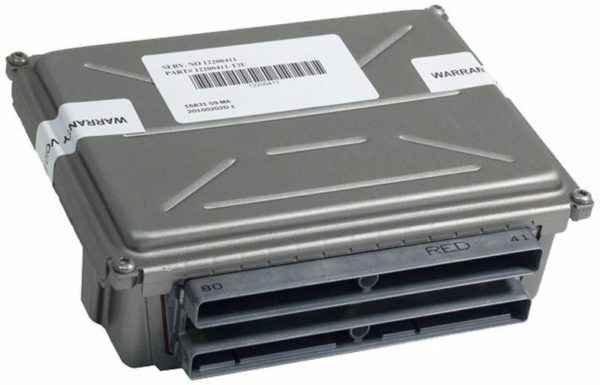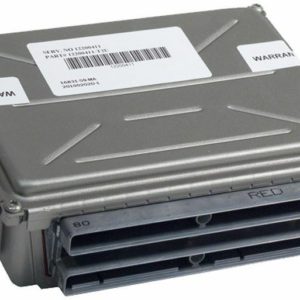Is Your Grand Am or GM Vehicle Running Rough?
If you’re dealing with a frustrating check engine light that won’t go away, erratic engine performance, harsh shifting, or even a no-start condition, a failing Powertrain Control Module (PCM) is often the culprit. In my 20+ years as a technician, I’ve seen these exact symptoms on countless late-90s GM vehicles. Drivers spend hundreds on sensors and other parts, only to find the root cause was the vehicle’s computer all along. This isn’t just a part; it’s the solution to getting your car’s reliability and performance back.
The Critical Importance of VIN Programming
Don’t make the mistake of buying a used module from a junkyard. On these GM vehicles, the PCM is tied to the car’s specific Vehicle Identification Number (VIN). A mismatched module can cause a host of problems, from the anti-theft system preventing the car from starting to incorrect transmission shift points. We eliminate that expensive and time-consuming trip to the dealership. When you order from us, we flash this module with the latest official GM software updates, specifically calibrated to your car’s VIN. It arrives at your door ready for a straightforward installation.
“A customer’s 1999 Alero with the 3.4L came into my shop last week with an intermittent crank-no-start issue. He had already replaced the battery and crank sensor. After confirming power and ground at the PCM connector, I found the module wasn’t sending the 5-volt reference signal to the sensors. Swapping in a correctly programmed PCM, just like this one, solved the problem instantly. It’s a classic failure mode for these units.”
Symptoms of a Failing 1998-1999 Grand Am PCM
A failing engine computer can manifest in many ways. If your vehicle is experiencing any of the following, this module is the likely solution:
- ✔ Persistent Check Engine Light (CEL)
- ✔ Unexplained diagnostic trouble codes (DTCs)
- ✔ Engine stalling or misfiring
- ✔ Harsh or erratic automatic transmission shifting
- ✔ Complete no-start or intermittent starting problems
- ✔ Poor fuel economy
- ✔ Failure to communicate with a diagnostic scan tool
Simple Installation Guide
You can do this yourself with basic hand tools. While the exact location varies slightly by model, the process is generally the same.
- Safety First: Disconnect the negative terminal from your car’s battery.
- Locate the PCM: On most models like the Grand Am and Alero, the PCM is found inside the vehicle, behind the glove box or on the lower left-hand side of the center dash. On vans like the Venture and Silhouette, it’s often in the engine bay, sometimes inside the air filter housing.
- Disconnect the Old Module: Carefully unplug the electrical connectors. There are typically several large multi-pin connectors with locking tabs.
- Swap the Modules: Unbolt the old PCM and secure the new one in its place.
- Reconnect Everything: Firmly plug the electrical connectors into your new PCM until they click into place. Reconnect the negative battery terminal.
- Final Step: Your vehicle may require a security relearn procedure, which is a simple process of cycling the key. Instructions are widely available online for your specific model.
Guaranteed Fitment and Compatibility
This module is a direct replacement for several GM service numbers. If your original module has one of the following numbers on its label, this part is a 100% compatible replacement: 09356741, 16236757, 9356741, 9357034, 9357440, or 9366314.
It is confirmed to fit the following vehicles:
- Achieva: 1998 (3.1L)
- Alero: 1999 (3.4L)
- Bonneville: 1998
- Camaro: 1998 (3.8L)
- Century: 1998 (3.1L)
- Cutlass: 1998-1999
- Eighty Eight: 1998
- Firebird: 1998 (3.8L)
- Grand Am: 1998 (3.1L), 1999 (3.4L)
- Grand Prix: 1998
- Intrigue: 1998
- LeSabre: 1998 (3.8L)
- Lumina Car: 1998
- Malibu: 1998 (3.1L)
- Monte Carlo: 1998
- Park Avenue: 1998 (3.8L)
- Regal: 1998
- Riviera: 1998 (3.8L)
- Silhouette: 1998
- Skylark: 1998 (3.1L)
- Trans Sport: 1998
- Venture: 1998 (3.4L)


